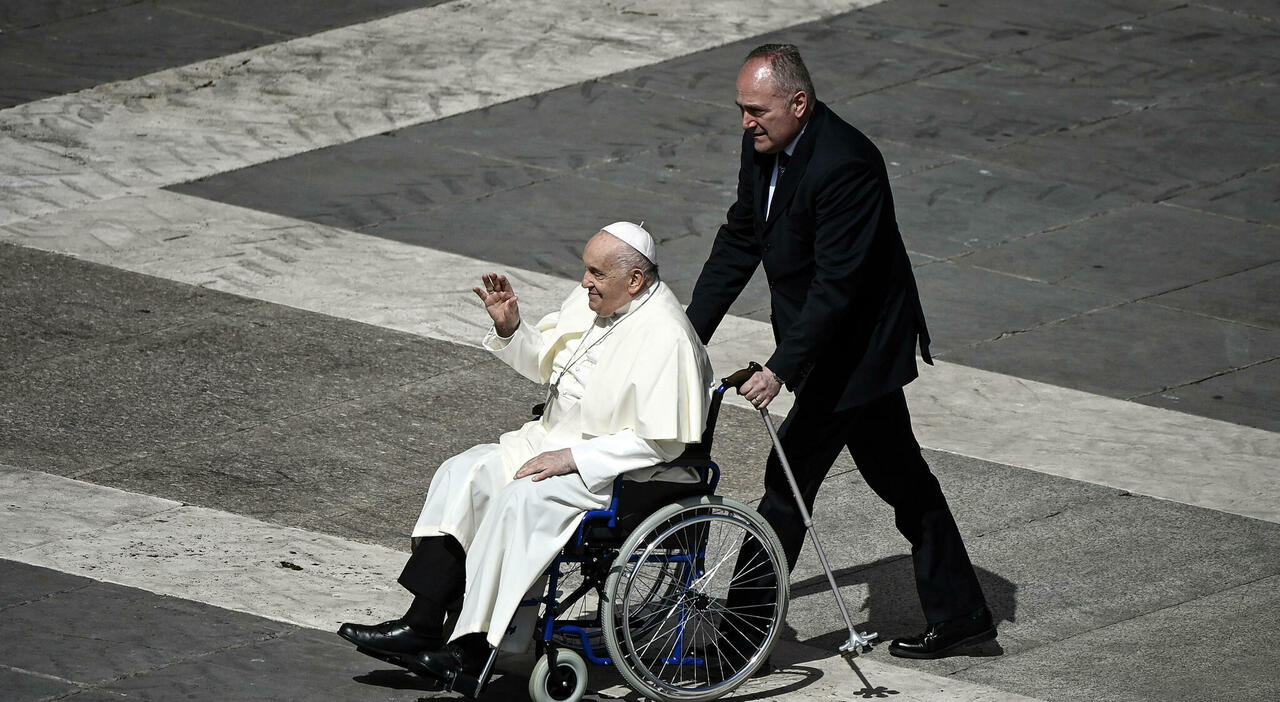Wednesday 3 April 2024, 15:44
The eighty-seven-year-old Pope Francis has decided to get a few things off his chest. A year after the death of his predecessor, he suggests how a sort of magic circle had formed around Joseph Ratzinger, which was effectively able to monitor him closely. "He was almost kept in custody in the last period of his life. I'm not saying a prisoner or incarcerated, but as if he was guarded." To the point that if Benedict XVI wanted to phone, for example, his first former secretary, Monsignor Josef Clemens, he could do so only if Don Georg Gaenswein was not in the room. Without beating around the bush, he also added: "It hurt me that Benedict was used." CRITICISMS The interview book "El sucesor" (The Successor) written with Spanish journalist Javier Martinez-Brocal, in various passages, offers a glimpse that is far from evangelical, evidently marked by the animosity of opposing factions ready to interfere and manipulate. In another passage, it is described how cardinals and bishops would come to the Mater Ecclesiae monastery to complain about the "heresies" of Bergoglio. However, the Emeritus would come to his defense, thus silencing the faction that evidently did not digest the innovations introduced by Francis. Towards Don Georg, the Pope directed very harsh words: on his part "there was a lack of nobility and humanity." The reference is to having decided to publish after Ratzinger’s death his memoirs ("Nothing but the truth. My life alongside Benedict XVI") full of criticisms. "It caused me great pain: that on the day of the funeral a book is published that has turned me upside down, telling things that are not true, is very sad. Of course, it does not affect me, in the sense that it does not condition me. But it hurt me that Benedict was used." Don Georg, for his part, did not mince words, recounting, for example, how Bergoglio had caused great pain to Ratzinger by demolishing the measures on the so-called Latin mass. Or when Francis removed Gaenswein from the role of Prefect of the Papal Household, relegating him to the Monastery to better follow the elderly Ratzinger. THE TWO POPES That the cohabitation of the two Popes was never easy was foreseeable even if - to be fair - in the ten years of forced cohabitation the personal relationship between the two was always characterized by brotherhood and mutual kindness. But the issues were destined to cyclically come to a head and perhaps it is no coincidence that Gaenswein was ousted without any curial assignment. "I was shocked and speechless," said Don Georg, then sent to Germany without a specific placement. So much so that he is still looking for a placement waiting for some reconsideration by Francis. With the death of Benedict XVI, a new phase of the current pontificate has certainly opened, now free from an imposing and very authoritative presence. Pope Bergoglio is in fact accelerating the reforms without fearing the internal factions that at the time found references to the Monastery. Even the convent in which Ratzinger lived has been renovated and some nuns have been called from Argentina with the task of praying for the unity of the Church. FUNERAL Other jabs, from Pope Francis, went to the management of the Emeritus's funeral, with night vigils of crowds praying in front of the deceased's body lying on a catafalque at St. Peter's. In those days, flags were at half-mast throughout Italy as a sign of respect but not in the Vatican. Bergoglio imagines his funeral completely different, simpler, normal, for example without vigils and with his body directly in the coffin. He anticipates that he is revising the funeral ritual by eliminating redundant details. "Popes must be veiled and buried like any child of the Church. With dignity, like any Christian, and not above pillows. When it's over, they will take me to Santa Maria Maggiore. I have a lot of devotion for that basilica even before being Pope. Everything is already ready there." The Esquiline, he recalled, is the area where slaves and the poor were buried.
© ALL RIGHTS RESERVED
This article is automatically translated
